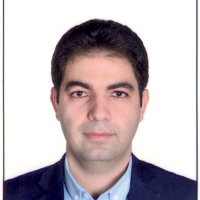Performance Evaluation of 2D Transformation Models for Satellite Image Registration
Author(s):
Article Type:
Research/Original Article (دارای رتبه معتبر)
Abstract:
Image registration aims to establish precise geometrically alignment between two images of the same scene taken at different times, different viewpoints, or different sensors. It is an essential task in diverse remote sensing and photogrammetry processes such as change detection, 3D modeling, information fusion, geometric correction, and bundle block adjustment. Nowadays, feature based approaches are generally used for satellite image registration due to their resistant against geometric and radiometric variations. A feature based image registration method comprises three main steps: (1) control point (tie-point) extraction, (2) transformation model computation, and (3) image resampling. In the first step, some distinctive conjugate features are automatically extracted using various image matching approaches. In the second step, a suitable transformation model between two images is computed using the extracted control points from the previous step. In the third step, the input image is rectified to the geometry of the base image using the computed transformation model.
Transformation models generate the spatial relation between the images and play a critical role in the positional accuracy of the image registration process. Various transformation models have been proposed for remote sensing image registration. The transformation models are generally divided into two types: (a) global models and (b) adaptive models. The global models have a constant number of parameters and describe the global spatial relations between two images. In contrast, the number of parameters in adaptive models are not constant and varies with the severity of the geometric variations and the number of control points. Each transformation model has its strengths and drawbacks. In this paper the capability of some popular transformation models, including similarity, projective, polynomials of degrees 1 to 4, piecewise linear (PL), Multiquaderic (MQ) and Pointwise (PW) are evaluated for high resolution stereo satellite imagery.
To extract high accurate and well distributed control points, an integrated image matching process based on FAST (Features from Accelerated Segment Test) detector, SIFT (Scale Invariant Feature Transform) descriptor and the least square matching algorithm has been proposed. In this method, the initial point features are efficiently extracted using FAST algorithm in a gridding strategy. Then, the well-known SIFT descriptors are computed for extracted features. The control points are determined using feature descriptor comparison in two images, and their positional accuracy are improved using least square matching method.
Two evaluation criteria, including computation speed and positional accuracy are used to investigate the capability of the transformation models. To investigate the effect of the feature density in quality of the transformation models, the extracted control points are divided into four classes with different number and distribution of the control points. The experimental results using two high resolution remote sensing image pairs from ZY3 and IKONOS sensors, show that the adaptive MQ model provides the best results, followed by PW and PL models. In contrast, the similarity, projective and global polynomial models do not provide acceptable results for accurate registration in high resolution remote sensing images. However, the commutation time in adaptive models especially in MQ is very high. The registration accuracy of the proposed approach for the MQ model is 2 and 1.9 pixel, for the ZY3 and IKONOS images respectively
Language:
Persian
Published:
Journal of Geomatics Science and Technology, Volume:8 Issue: 2, 2018
Pages:
83 to 97
magiran.com/p1930569
دانلود و مطالعه متن این مقاله با یکی از روشهای زیر امکان پذیر است:
اشتراک شخصی
با عضویت و پرداخت آنلاین حق اشتراک یکساله به مبلغ 1,390,000ريال میتوانید 70 عنوان مطلب دانلود کنید!
اشتراک سازمانی
به کتابخانه دانشگاه یا محل کار خود پیشنهاد کنید تا اشتراک سازمانی این پایگاه را برای دسترسی نامحدود همه کاربران به متن مطالب تهیه نمایند!
توجه!
- حق عضویت دریافتی صرف حمایت از نشریات عضو و نگهداری، تکمیل و توسعه مگیران میشود.
- پرداخت حق اشتراک و دانلود مقالات اجازه بازنشر آن در سایر رسانههای چاپی و دیجیتال را به کاربر نمیدهد.
In order to view content subscription is required
Personal subscription
Subscribe magiran.com for 70 € euros via PayPal and download 70 articles during a year.
Organization subscription
Please contact us to subscribe your university or library for unlimited access!



